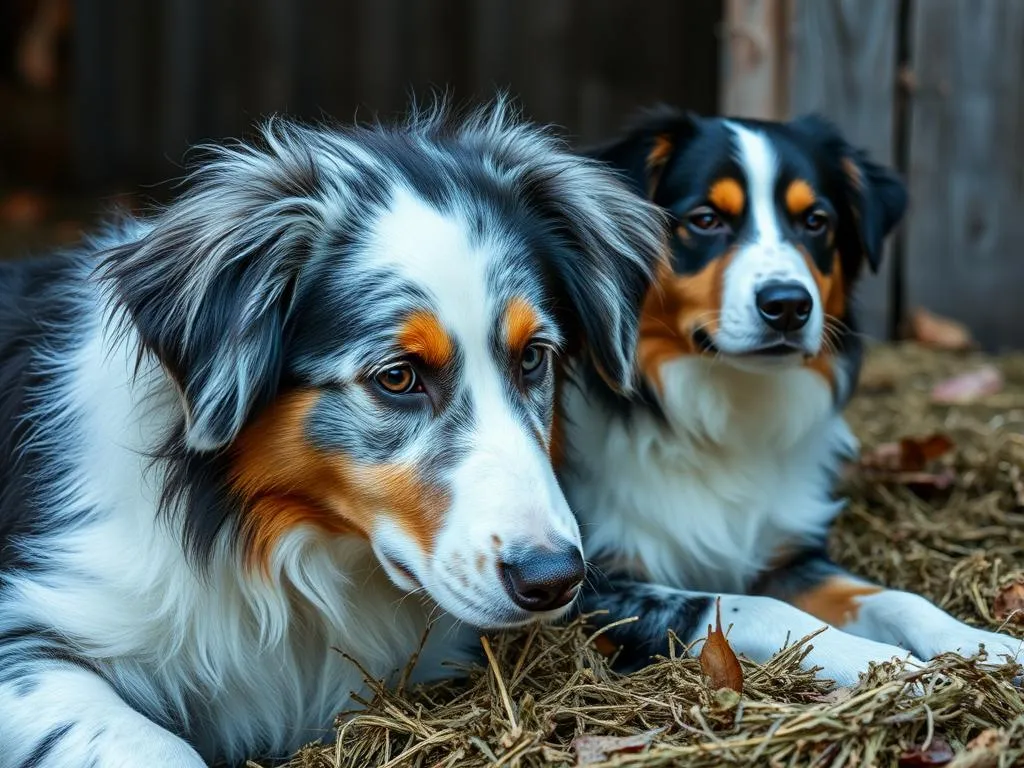
Understanding the various dog breeds is essential for any prospective dog owner. Each breed comes with its unique characteristics, temperaments, and care requirements. Among these, the Australian Shepherd stands out as a highly intelligent and energetic breed. In this article, we will delve into whether Australian Shepherds shed a lot, alongside other critical information about the breed.
Understanding Dog Breeds
Definition of Dog Breeds
A dog breed refers to a specific group of domestic dogs with similar characteristics and traits, including size, coat type, temperament, and behavior. Understanding these traits is crucial for selecting a dog that fits your lifestyle and preferences. Different breeds may require varying levels of exercise, grooming, and socialization, which should be considered before bringing a new furry friend home.
Overview of Popular Dog Breeds
Some popular dog breeds include Labrador Retrievers, German Shepherds, Golden Retrievers, and Bulldogs. Each breed has its unique traits, such as energy levels, trainability, and health concerns. When choosing a breed, it’s essential to consider how well it aligns with your lifestyle, whether you’re an active individual or someone who prefers a more relaxed environment.
The Australian Shepherd: A Closer Look
History and Origin
The Australian Shepherd was developed in the United States, primarily as a herding dog for livestock. Despite its name, the breed has ties to the Basque shepherds who came to America with their dogs from Australia. Australian Shepherds were bred for their intelligence and agility, which made them exceptional working dogs. Their heritage as herders means they have a strong instinct to chase and herd, making training and socialization essential.
Physical Characteristics
Australian Shepherds are medium-sized dogs, typically weighing between 40 to 65 pounds. They have a well-proportioned body with a distinctive coat that can be straight or wavy. Common coat colors include blue merle, black, red merle, and red, often with white markings. One of the breed’s most striking features is their eye color, which can vary from brown to blue, and sometimes even one of each—a trait known as heterochromia.
Temperament and Behavior
Known for their intelligence, Australian Shepherds are highly trainable and eager to please. They are loyal, protective, and can be reserved with strangers but are usually affectionate with their families. This breed thrives in active environments and is well-suited for families, singles, and individuals who enjoy outdoor activities. Their herding instincts mean they may be more energetic than some other breeds, requiring ample exercise and mental stimulation.
Shedding in Dogs: An Overview
What is Shedding?
Shedding is the natural process by which dogs lose old or damaged hair. It’s a regular occurrence that allows for the growth of new fur. While all dogs shed to some degree, the amount varies widely among different breeds.
Factors Affecting Shedding
Several factors can influence how much a dog sheds, including:
– Seasonal changes: Many dogs experience seasonal shedding, where they lose a significant amount of fur in spring and fall.
– Health and diet: A dog’s overall health and nutrition can impact the condition of its coat and shedding patterns.
– Breed-specific factors: Some breeds are known to shed more than others, often due to their coat type and structure.
Do Australian Shepherds Shed a Lot?
Shedding Patterns
So, do Australian Shepherds shed a lot? The answer is yes; they do shed and can be considered moderate to heavy shedders. They have a double coat, which means they have an undercoat that can become especially thick. During shedding seasons, you may notice more fur around your home, especially if you have multiple Australian Shepherds or other pets.
Seasonal Shedding
Australian Shepherds typically shed year-round but experience more significant shedding during the spring and fall. In spring, they lose their winter coat to prepare for warmer weather, while in the fall, they shed to make way for a thicker winter coat. It’s essential to be prepared for these seasonal changes, as they can lead to increased grooming needs.
Grooming Needs
To manage shedding effectively, grooming is crucial. Regular brushing can help remove loose fur and prevent mats, especially in areas with dense undercoats. For Australian Shepherds, it’s advisable to brush them at least once a week, increasing the frequency to two or three times a week during heavy shedding seasons. Using proper grooming tools, such as slicker brushes and de-shedding tools, can significantly help manage their coat.
Managing Shedding in Australian Shepherds
Dietary Considerations
A well-balanced diet plays a critical role in maintaining a healthy coat. Foods rich in Omega-3 fatty acids, like fish oil, can improve skin health and help minimize shedding. Additionally, consider incorporating high-quality dog food that meets the nutritional needs of your Australian Shepherd. Supplements like biotin and flaxseed oil may also support coat health and reduce shedding.
Regular Grooming Tips
Grooming your Australian Shepherd is not just about keeping their coat looking good; it’s also vital for their overall health. Regular brushing removes loose fur, dirt, and debris while promoting better circulation in the skin. Bathing your dog every few months, or as needed, can also help control shedding. Be sure to use a dog-specific shampoo to maintain the natural oils in their coat.
Home Care and Cleaning Tips
With a shedding dog, maintaining a clean home can be a challenge. Here are some tips for managing fur around the house:
– Use a vacuum cleaner designed for pet hair.
– Consider using lint rollers or sticky tape on furniture and clothing.
– Keep a cleaning schedule to address fur accumulation regularly.
Frequently Asked Questions (FAQs)
Common Myths about Australian Shepherds and Shedding
One common misconception is that all dogs of a certain breed shed the same amount. While Australian Shepherds do shed a fair amount, individual dogs may vary based on their health, diet, and grooming routine. Another myth is that dogs with longer hair shed more than those with shorter hair; in reality, it often comes down to the type and quality of the coat.
Health Concerns Related to Shedding
While shedding is normal, excessive or sudden changes in shedding patterns can indicate underlying health issues. If your Australian Shepherd is losing more fur than usual or is showing signs of skin irritation, it may be time to consult a veterinarian. Conditions such as allergies, skin infections, or hormonal imbalances can contribute to increased shedding.
Other Breeds with Similar Shedding Patterns
If you’re considering dogs with shedding patterns similar to Australian Shepherds, breeds like the Siberian Husky and the German Shepherd may come to mind. Both breeds have double coats and experience regular seasonal shedding, making them comparable to the Australian Shepherd in terms of grooming needs.
Conclusion
In summary, understanding shedding in Australian Shepherds is vital for prospective owners. These dogs are known for their intelligence, loyalty, and beautiful coats, but they do shed a significant amount. Regular grooming, a proper diet, and maintaining a clean home can help manage this shedding efficiently. By being prepared and informed, you can ensure a happy and healthy life for your Australian Shepherd.









